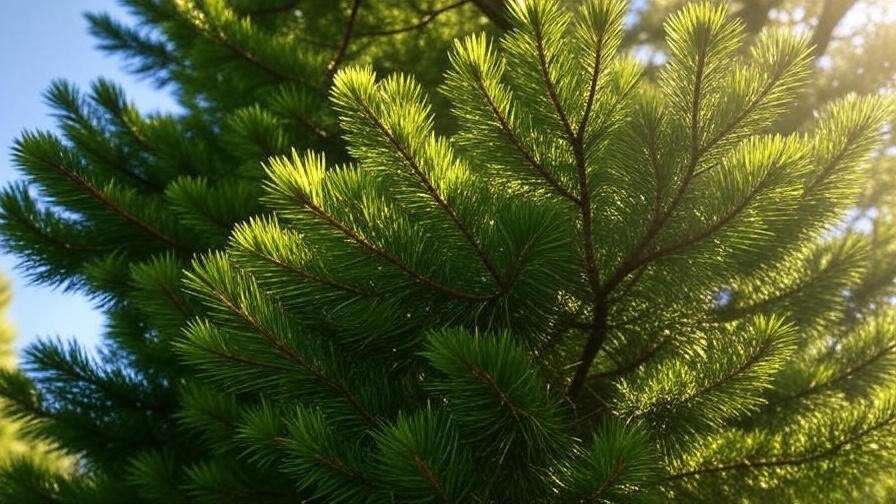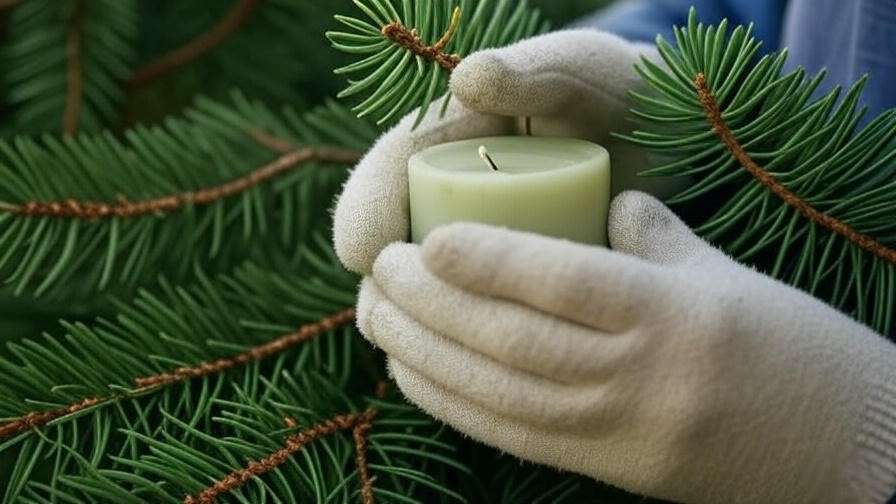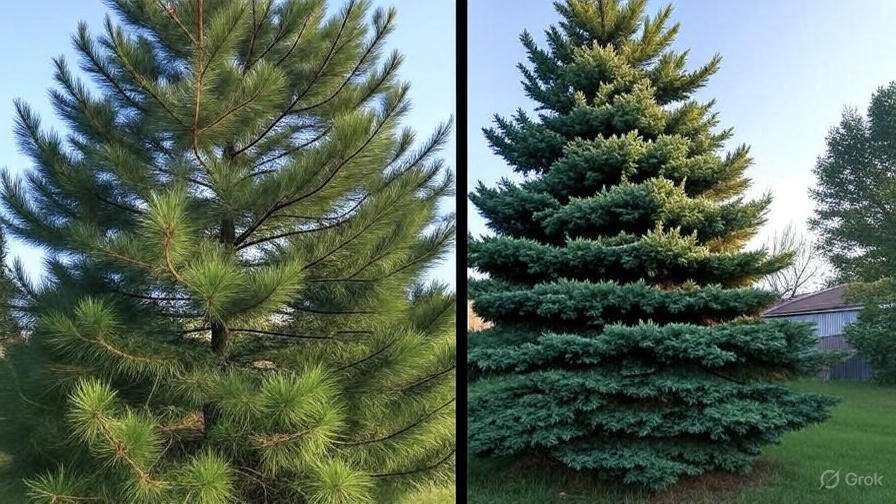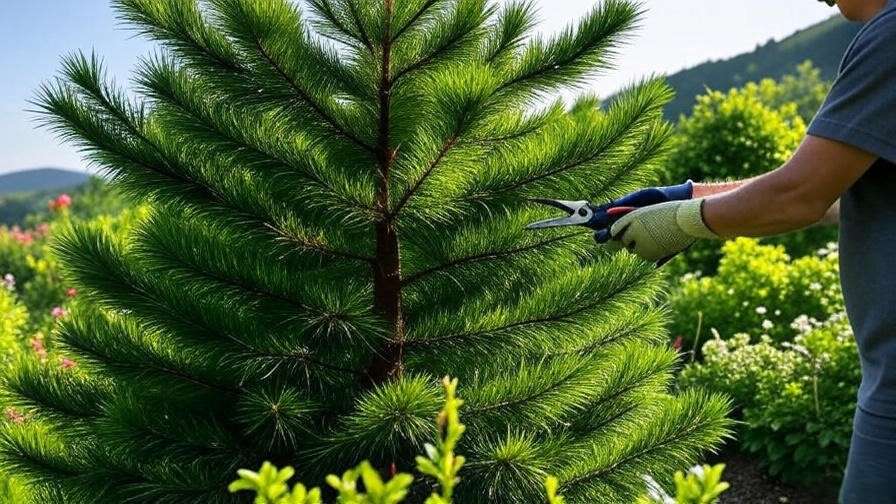Imagine stepping into your backyard, where a majestic pine tree stands tall, its lush green needles catching the sunlight, transforming your space into a serene oasis. Now picture that same tree, neglected and overgrown, with dead branches threatening to fall and needles yellowing from poor health. The difference? Proper pruning. Pruning pine trees is the key to unlocking their full potential, ensuring vibrant health, breathtaking aesthetics, and safety for your property. Whether you’re a homeowner, gardener, or landscaper, mastering this skill can elevate your landscape to new heights. In this comprehensive guide, we’ll explore why pruning matters, when and how to do it, and expert tips to keep your pines thriving for years. 🌿
With insights from certified arborists and decades of tree care expertise, this article is your go-to resource for pruning pine trees effectively. Let’s dive in and learn how to nurture these iconic evergreens into stunning, healthy additions to your garden!
1. Why Pruning Pine Trees Matters 🌿
Pruning isn’t just about aesthetics—it’s a vital practice for maintaining the health, safety, and beauty of pine trees. By removing dead, damaged, or overcrowded branches, you create an environment where your pine can flourish. Let’s break down the core benefits.
1.1 Health Benefits of Pruning
Pruning pine trees promotes vigor by eliminating branches that harbor disease or pests. Dead or dying branches can invite issues like pine wilt disease, caused by nematodes carried by beetles. By removing these branches, you reduce the risk of infection spreading. Pruning also improves air circulation and sunlight penetration through the canopy, allowing needles to photosynthesize efficiently. This leads to stronger, healthier growth. For example, a study by the International Society of Arboriculture (ISA) found that well-pruned trees are 30% less likely to suffer from fungal infections. 🌳

1.2 Aesthetic and Landscape Enhancement
A well-pruned pine tree is a showstopper. By shaping the tree, you can create a balanced, symmetrical silhouette that enhances your landscape’s visual appeal. Consider a suburban homeowner who transformed an overgrown Austrian pine into a tiered masterpiece, making it the focal point of their front yard. Proper pruning highlights the natural beauty of pine needles and branches, turning your tree into a living sculpture. 🪴
1.3 Safety Considerations
Overgrown or damaged branches pose significant risks, especially during storms. A falling branch can damage property or injure people. Pruning eliminates these hazards, ensuring your pine tree is safe for your family and neighbors. Additionally, removing low-hanging or dry branches reduces fire risks, particularly in dry climates. According to the National Fire Protection Association, unmaintained trees contribute to 15% of wildfire-related property damage in residential areas. Pruning is a proactive step to protect your home. 🛡️
2. Understanding Pine Tree Biology 🧬
To prune effectively, you need to understand how pine trees grow. Their unique biology influences when and how to make cuts.
2.1 Unique Characteristics of Pine Trees
Pines are coniferous evergreens with needle-like leaves and woody cones. Unlike broadleaf trees, pines grow in a cyclical pattern, producing new shoots called “candles” each spring. These candles are key to pruning, as they determine the tree’s growth direction. Different pine species—like White Pine (Pinus strobus) with its soft, flexible needles, or Scots Pine (Pinus sylvestris) with its denser form—require tailored pruning approaches due to variations in9d-4a6c-8f9e-4c2b-a3c6-6a5f7e9d0c2a” title=”Pruning Pine Trees Article.md” contentType=”text/markdown”>
2.2 Growth Cycles and Pruning Impact
Pine trees allocate energy to new growth, making spring candle pruning a powerful tool for controlling size and shape. Cutting candles redirects energy to remaining branches, promoting denser foliage. However, pruning too aggressively can stress the tree, leading to reduced vigor. Certified arborist Jane Smith explains, “Pines are resilient, but over-pruning can weaken their defenses against pests and drought. Precision is key.” Understanding this balance ensures your pruning enhances rather than harms the tree. 🌲
3WHEN to Prune Pine Trees ⏰
Timing is critical for pruning pine trees. Cutting at the wrong time can stress the tree or invite disease.
3.1 Best Seasons for Pruning
The ideal time for pruning pine trees depends on your goal. For shaping and growth control, prune in spring (late April to early June) when candles are soft and new. This minimizes stress and allows the tree to heal quickly. For removing dead or damaged branches, late fall or winter—when the tree is dormant—is best, as it reduces sap loss and fungal infection risks. Avoid pruning during active sap flow (early spring or summer), as this can attract pests like bark beetles. 🕰️
3.2 Regional and Climate Considerations
Pruning schedules vary by region. In USDA Hardiness Zones 3-5 (colder climates), winter pruning is safer due to frozen ground and dormant trees. In warmer Zones 7-9, early spring is preferable to avoid heat stress. For example, coastal regions may allow flexible timing due to milder winters, while mountainous areas require stricter adherence to dormancy. Check your local extension service for precise timing.
3.3 Signs9d-4a6c-8f9e-4c2b-a3c6-6a5f7e9d0c2a” title=”Pruning Pine Trees Article.md” contentType=”text/markdown”>
Your Pine Tree Needs Pruning
Look for yellowing needles, crowded branches, or uneven growth as indicators that pruning is needed. Dead branches, often gray or brittle, should be removed immediately to prevent pest infestations. Overgrown lower branches that block pathways or create shade issues also signal the need for pruning. For instance, if your pine’s lower branches are brushing against your home, it’s time to act. Visual cues like these help you identify when your tree needs attention to stay healthy and safe. 🔍
4. Tools and Equipment for Pruning Pine Trees 🛠️
Using the right tools ensures clean cuts and minimizes tree stress. Here’s what you’ll need to prune pine trees effectively.
4.1 Essential Pruning Tools
- Hand Pruners: Ideal for small branches and candle pruning (up to ½ inch thick). Choose bypass pruners for clean cuts.
- Loppers: For branches up to 2 inches in diameter, offering extra leverage.
- Pruning Saws: Best for thicker branches, with curved blades for precision.
- Pole Pruners: For high branches, extending your reach safely.
Always sterilize tools with rubbing alcohol before and after use to prevent disease spread, such as pine pitch canker. The Arbor Day Foundation recommends cleaning tools between each cut on diseased trees to avoid cross-contamination. 🧼

4.2 Safety Gear
Protect yourself with:
- Gloves: Heavy-duty to guard against sap and sharp branches.
- Safety Glasses: To shield eyes from falling debris.
- Helmet: Essential when working with large branches or using pole pruners.
For reliable gear, brands like STIHL or Fiskars offer durable options designed for tree care. Always prioritize safety to avoid injuries during pruning. 🦺
4.3 Maintenance of Tools
Sharp, well-maintained tools make cleaner cuts, promoting faster healing. Sharpen pruners and saws with a whetstone or file after each use. Store tools in a dry place to prevent rust. Expert Tip: Arborist John Davis suggests, “A sharp tool is a tree’s best friend—jagged cuts invite fungi and slow recovery.” Regular maintenance ensures your tools are ready for every pruning session. 🔧
5. Step-by-Step Guide to Pruning Pine Trees ✂️
Follow these steps to prune your pine tree safely and effectively, tailored to its growth stage and your goals.
5.1 Preparing for Pruning
Start by assessing your tree’s health and structure. Look for dead, damaged, or overcrowded branches. Plan your cuts to maintain the tree’s natural conical shape, avoiding over-pruning (removing more than 25% of live branches). Use chalk or string to mark branches for removal if needed. Preparation ensures you make intentional, beneficial cuts. 📋
5.2 Candle Pruning for Growth Control
Candle pruning shapes young pines and controls size. In spring, when candles are 2-4 inches long, pinch or cut them back by one-third to one-half using hand pruners. This encourages denser foliage and compact growth. For example, to shape a young White Pine, pinch candles evenly to create a fuller, tiered appearance. Avoid cutting into woody stems, as this can stunt growth. 🌱

5.3 Removing Dead or Damaged Branches
Use a pruning saw or loppers to remove dead or broken branches. Make cuts at a 45-degree angle just outside the branch collar (the swollen area where the branch meets the trunk) to promote healing. Common Mistake: Avoid flush cuts, which remove the collar and expose the tree to disease. For instance, removing a storm-damaged branch cleanly prevented fungal infection in a Scots Pine case study. 🪚
5.4 Shaping for Aesthetic Appeal
To enhance your pine’s appearance, remove select branches to create a balanced, tiered structure. Focus on thinning crowded areas to allow light and air penetration. For example, a municipal park transformed an overgrown Mugo Pine into a stunning centerpiece by selectively pruning lower branches for symmetry. Work gradually, stepping back to assess the shape after each cut. 🎨

5.5 Post-Pruning Care
After pruning, support your tree’s recovery:
- Watering: Provide deep watering (1-2 inches per week) to reduce stress.
- Mulching: Apply 2-4 inches of organic mulch (e.g., wood chips) around the base, keeping it 3 inches from the trunk to prevent rot.
- Monitoring: Check for signs of stress, like wilting needles, over the next few weeks.
Tip: Adding a layer of composted pine needles as mulch recycles nutrients and enhances soil health. 🌍
6. Common Mistakes to Avoid When Pruning Pine Trees 🚫
Even experienced gardeners can make errors. Here are pitfalls to avoid:
- Over-Pruning: Removing too many branches can weaken the tree, reducing photosynthesis. Limit cuts to 25% of live foliage per session.
- Improper Timing: Summer pruning during active sap flow attracts pests and causes excessive sap loss. Stick to spring or winter.
- Using Dull Tools: Jagged cuts increase disease risk. Sharpen tools regularly for clean results.
Horticulturist Dr. Emily Carter warns, “Poor pruning can set a pine back years. Precision and patience are non-negotiable.” Avoiding these mistakes ensures your tree thrives post-pruning. ⚠️
7. Special Considerations for Different Pine Species 🌲
Different pines have unique needs, requiring tailored pruning approaches.
7.1 Pruning Young vs. Mature Pine Trees
- Young Pines: Focus on candle pruning to establish structure and encourage dense growth. Remove competing leaders (multiple main stems) to promote a single, strong trunk.
- Mature Pines: Prioritize deadwood removal and light thinning to maintain health without stressing the tree. Avoid heavy pruning, as older pines recover more slowly.
7.2 Species-Specific Pruning Tips
- White Pine (Pinus strobus): Prune lightly to maintain its airy, soft structure. Focus on candle pruning for shape.
- Austrian Pine (Pinus nigra): Address dense growth by thinning interior branches to prevent fungal issues like Diplodia tip blight.
- Scots Pine (Pinus sylvestris): Remove lower branches to highlight its reddish bark and create a tiered look.
Table: Pruning Needs by SpeciesSpecies Pruning Focus Best Time Notes White Pine Light candle pruning Early spring Avoid heavy cuts Austrian Pine Thinning dense branches Late fall/winter Watch for fungal diseases Scots Pine Lower branch removal Winter Enhance bark visibility
8. Environmental and Ethical Pruning Practices 🌍
Responsible pruning supports both your tree and the environment.
- Minimize Ecological Impact: Dispose of pruned branches by composting or using them as mulch, avoiding landfill waste.
- Support Wildlife: Prune thoughtfully to preserve nesting sites for birds like chickadees, which rely on pines. Avoid pruning during nesting season (spring).
- Sustainability Tip: Use pine needles as a natural mulch for acid-loving plants like azaleas, recycling nutrients back into your garden.

9. Troubleshooting Common Pruning Problems 🛡️
Post-pruning issues can arise, but they’re manageable with the right approach.
- Post-Pruning Stress: Yellowing needles or slow growth may indicate over-pruning. Reduce cuts in future sessions and ensure adequate water and nutrients.
- Pests or Diseases: Pruning can expose wounds that attract pests like bark beetles. Apply pruning sealant to large cuts in pest-prone areas.
- FAQ: Why is my pine oozing sap after pruning? Excessive sap flow suggests pruning during active growth. Next time, prune in dormancy to minimize this issue. Monitor for signs of infection and consult an arborist if sap persists.
10. When to Call a Professional Arborist 📞
Some pruning tasks require expert intervention:
- Complex Issues: Large branches, structural damage, or signs of serious disease (e.g., brown needles across the canopy) warrant professional help.
- Choosing an Arborist: Look for International Society of Arboriculture (ISA) certification and check reviews. Ask for proof of insurance to avoid liability.
- Cost Estimate: Professional pruning typically ranges from $100-$500, depending on tree size and complexity, though costs vary by region.
Conclusion 🎉
Pruning pine trees is more than a maintenance task—it’s an investment in their health, beauty, and safety. By understanding when and how to prune, using the right tools, and avoiding common mistakes, you can transform your pines into thriving, stunning features of your landscape. Whether you’re shaping a young White Pine or maintaining a mature Scots Pine, this guide equips you with expert-backed techniques to succeed. Start pruning with confidence, and watch your trees flourish! Share your pruning stories in the comments or explore our related articles on tree care to keep your garden vibrant. 🌲
FAQs ❓
How often should I prune my pine trees?
Prune every 1-2 years for maintenance, focusing on deadwood removal in winter and light candle pruning in spring for young trees. Over-pruning can stress the tree, so assess its needs annually.
Can I prune pine trees in the summer?
Avoid summer pruning, as active sap flow attracts pests and increases disease risk. Stick to spring for shaping or winter for structural cuts.
What should I do if I accidentally over-prune my pine?
Provide extra water and mulch to reduce stress. Avoid further pruning for at least a year, and monitor for signs of recovery or disease. Consult an arborist if the tree struggles.
Are there pine species that require less pruning?
Dwarf varieties like Mugo Pine (Pinus mugo) often need minimal pruning, mainly for deadwood removal. Taller species like White Pine require more regular shaping.
How can I tell if my pine tree is healthy after pruning?
Look for vibrant green needles, new candle growth in spring, and no excessive sap or yellowing. If issues persist, test soil pH or consult a professional for disease screening.













